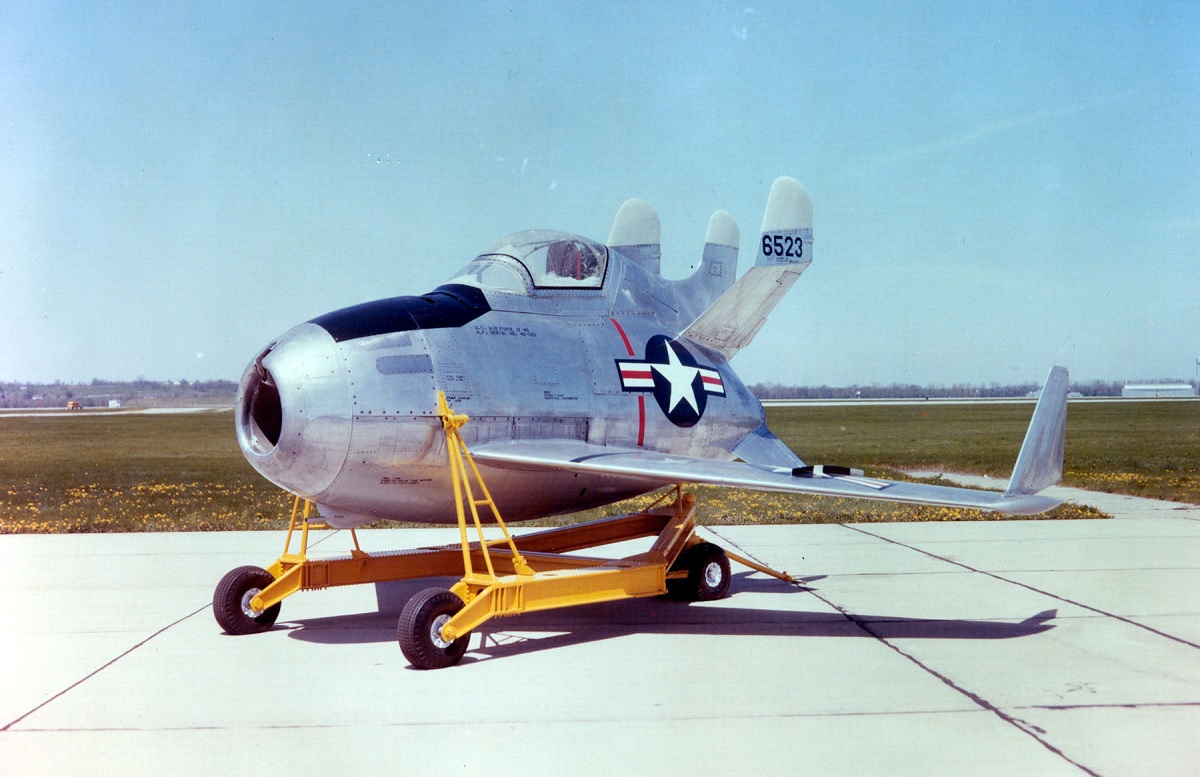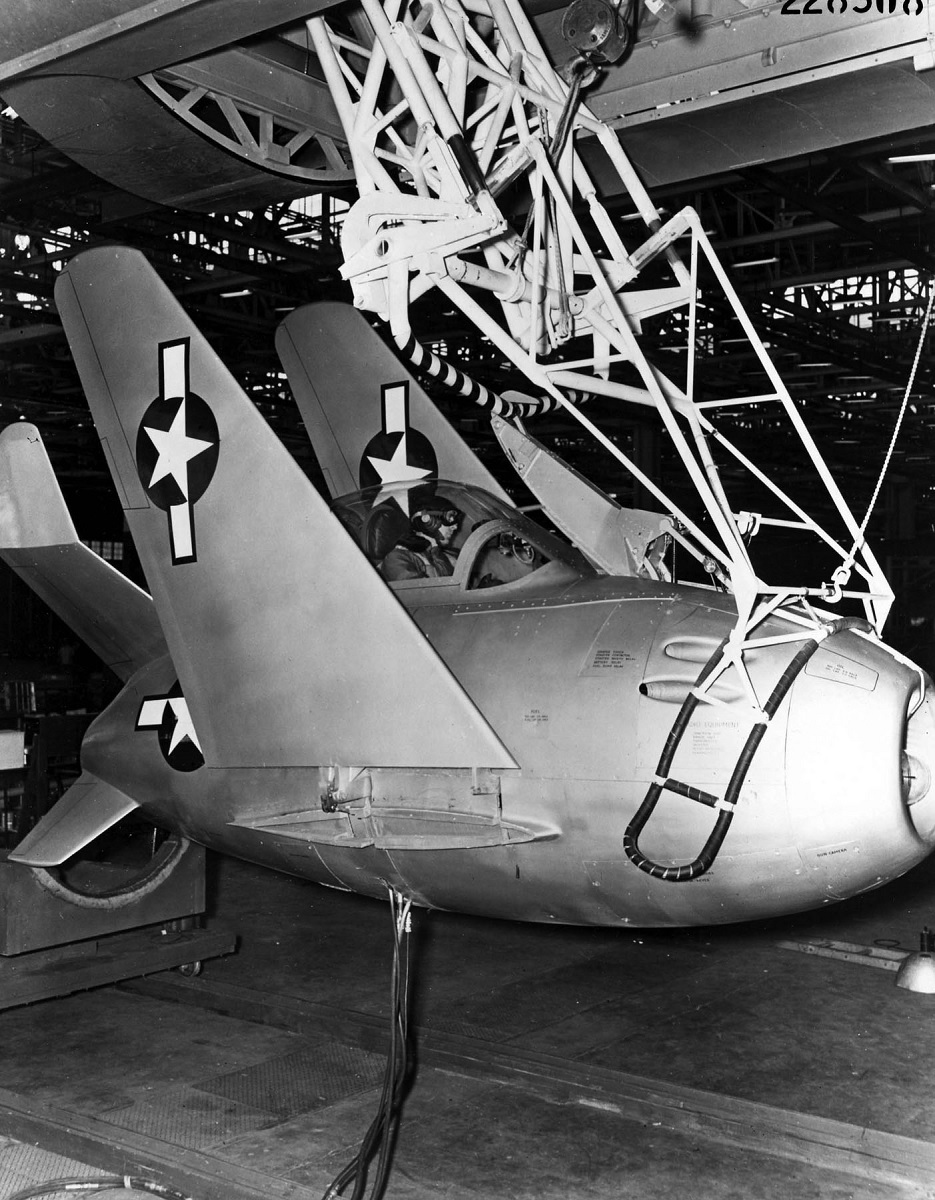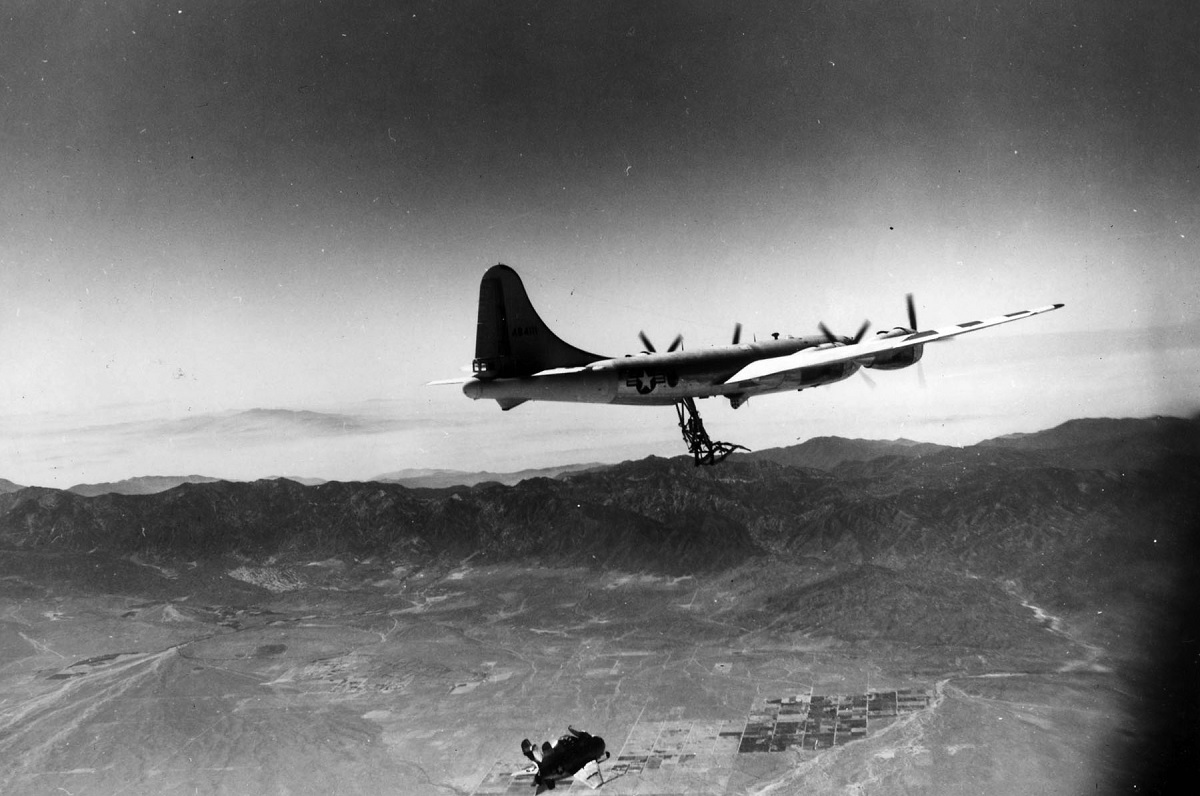To defend B-36 bombers flying far outside the range of traditional escort fighters, the McDonnell Aircraft Corp. created the XF-85 Goblin “parasite” fighter
To defend B-36 bombers flying far outside the range of traditional escort fighters, the McDonnell Aircraft Corp. created the XF-85 Goblin “parasite” fighter. If enemy fighters emerged, the Goblin would be lowered on a trapeze and released to engage the attackers. The XF-85 would be carried by the “parent” B-36 within a bomb bay. The Goblin would return to the B-36, re-attach to the trapeze, and be lifted back into the bomb bay once the enemy had been driven away.

The Goblin was rather peculiar, as the photos on this page demonstrate.
‘Yes, this was a real design. No, it wasn’t a scale model. This was the full scale, actually flying version,’ says Michael Perkins, an aviation expert, on Quora. ‘Less than 15 feet in length, just 21ft wingspan, and with a maximum weight of only 5,500lbs. Armament was equally light, just four .50 machine guns.

‘This wasn’t designed to be a ground fighter, though. It was designed to be carried by a much larger aircraft, the massive Convair B-36 bomber, and the proposed Northrop B-35 flying wing, as point-defense fighters. There were no fighters capable of escorting these bombers through enemy territory, so the theory was that the bombers would carry their own air defense, and if threatened they would launch these dinky mini-fighters that would be fast and maneuverable enough to at least prevent the enemy from attacking the more valuable bombers, and then when the threat was passed they would hook up to a trapeze-line retrieval system under the bomber’s belly and be drawn back up into their storage bays.’
Flight testing with a modified B-29 started in 1948 after two test aircraft were ordered in October 1945. The XF-85 could be launched successfully by test pilots, but recovery was hazardous and difficult because of the turbulent air under the B-29.

Perkins goes on;
‘Although the plane flew, and showed fairly decent handling in the normal flight envelope, the attempts to re-hook with the parent bomber were all failures and the test plane had to make belly landings (they were so small and light they weren’t even fitted with landing gear). It was also slower, less maneuverable, and much less heavily armed than the new Soviet fighters coming through that it would be expected to combat, so this combined with the failure of the docking concept and when aerial refueling of conventional fighter aircraft showed greater promise led to the cancellation of the program in 1949, just four years after the first proposals were made and after just two years of on-off flight testing.’
A B-36 has never launched or carried an XF-85.

Photo by U.S. Air Force

